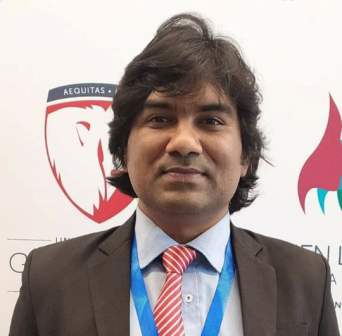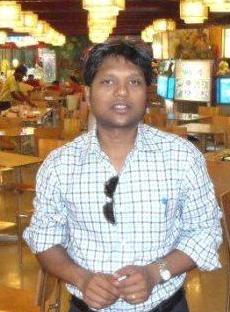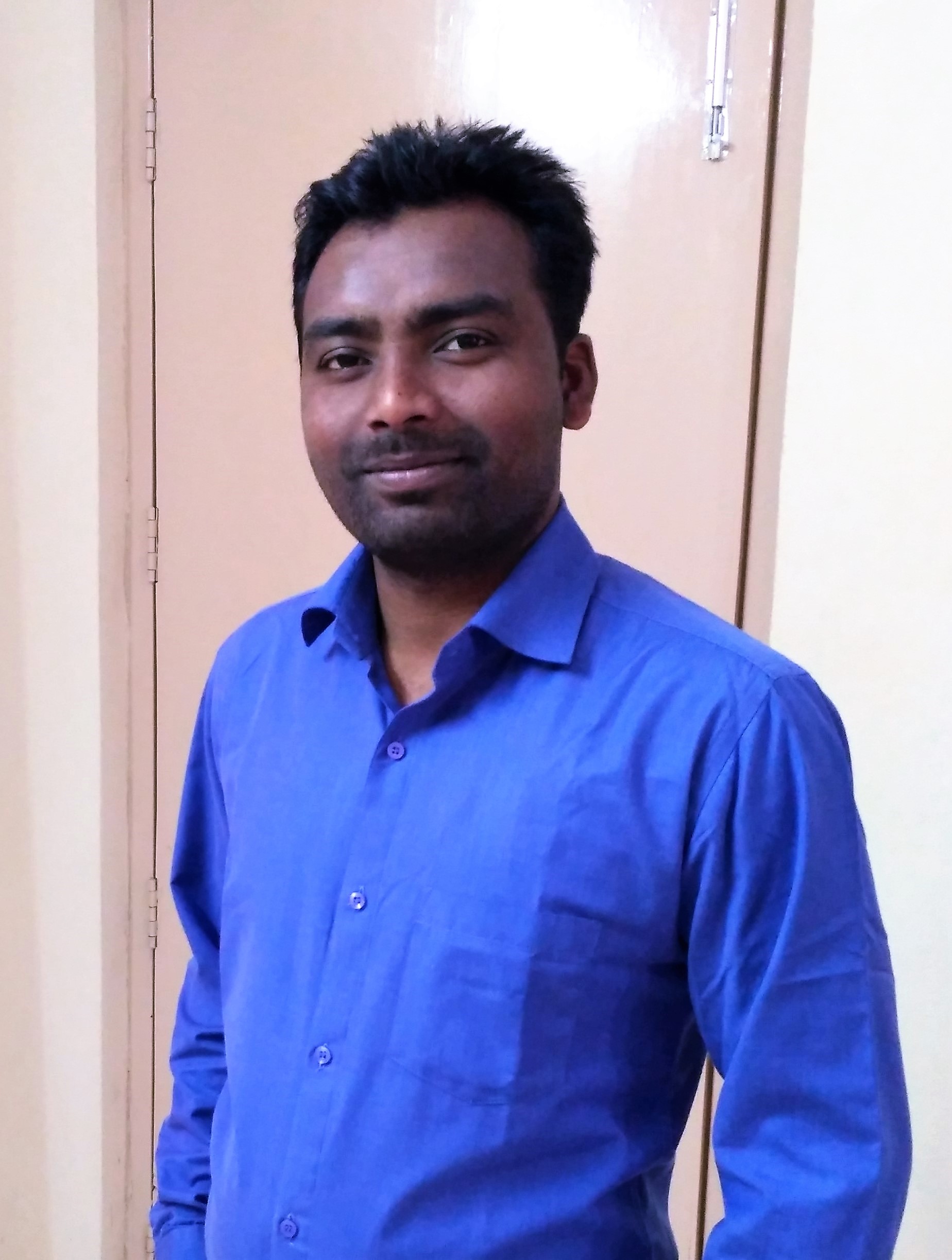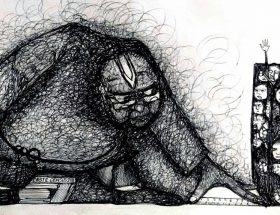Dr. Sandip Medhe
 Introduction
Introduction
The gross disparities in health that are conspicuous at the interface of different social orders in India are not new, but had been neglected in the discourse on Indian public health. These disparities in provision of health services driven by social forces result in unequal health outcomes among different social groups within the society(Adams et al., 2018), particularly with regards to the vulnerable, marginalized and socially excluded castes and tribes in the Indian society. According to the Commission on Social Determinants of Health brought together by the World Health Organization, factors such as social exclusion, food, transport, and stress are accepted as important social determinants of health (Marmot, 2017). Thus, unequal distribution of privileges and resources between different social classes results in differential opportunities to access health services.
National Family Health Survey (NFHS) is a national five-yearly survey conducted in India, and is analogous to the Demographic Health Survey (DHS) done in other middle/low income countries. Analysis of disaggregated data procured from the NFHS has established that caste in India has been persistently acting as a pivotal determinant of inequalities in health outcomes, especially for the Scheduled Castes (SC), Scheduled Tribes (ST), and Other Backward Classes (OBC) (Krishnan, 2000). Social exclusion, marginalization and discriminatory practices such as untouchability have become significant barriers to ensuring equitable access to essential health services such as primary healthcare, food security programs, maternal and reproductive health services, access to immunization. Such inequalities in health outcomes are the result of apathetic socio-political arrangements leading to avoidable but embodied inequalities in society (Krieger, 2012).
Background
Caste is a customary and exclusionary institution in the Indian society, which is based on ideas of hereditary social hierarchy and endogamy. Multitude of evidence is suggestive of the causal and consequential relationship between social exclusion/caste-based discrimination and adverse health outcomes (Vart, Jaglan, & Shafique, 2015). Caste is a vertical system of graded inequality. It ascribes every one living in the Indian society to a different social location, and constrains opportunities for status realization, especially for Scheduled Castes and Scheduled Tribes. (Hyochol Ahn, PhD, Michael Weaver, PhD, Debra Lyon, PhD, Eunyoung Choi, RN, and Roger B. Fillingim, 2017).
The preamble of the Universal Declaration of Human Rights enshrines the ethos of fraternity, equality, freedom, peace and inherent dignity of all human beings. Disregard to and contempt for health as a human right is an insult to the Universal Declaration of Human Rights; and continues to affect indicators of public health (Zandy, 2019). If people continue to be restricted from mingling with people from other communities, by way of observing endogamy as a social custom, these inequalities in access to health care would continue to grow over generations. The persistent of marginalization of lower castes in India puts them in a position of vulnerability which calls for urgent action to protect their human rights (Chapman & Carbonetti, 2011). In an Indian context, political as well as social power enjoyed by a community is contingent upon its caste location. The privileged castes in India, owing to their unchallenged supreme position in caste hierarchy, have usurped resources and have became influential in political and social domains, whereas the historically marginalized and discriminated castes remain as a vulnerable population (Attewell & Weekly, 2015).
Social exclusion resulting in health inequalities – insights from the National Family Health Survey (NFHS)
Analysis of disaggregated data from the NHFS reveals that health indicators are affected by intersections of various social identities. Various health indicators such as access to primary health care, vaccination, incidence of malnutrition, maternal and reproductive health, neo-natal mortality rate, infant mortality rate, occurrence of anemia have a strong correlation with the caste of the sample. People from the Scheduled Castes, Scheduled Tribes and Other Backward Classes have poorer health as compared to those from other dominant, non-excluded castes.
Table 1 – Comparison of health indictors between Scheduled Castes, Scheduled tribes, Other Backward Classes and non-excluded castes
|
Health Status Indicators |
Scheduled Castes (excluded) |
Scheduled Tribes (excluded) |
Other Backward Castes (excluded) |
Others (non excluded) |
All |
|
Infant Mortality Rate (IMR) |
66.4 |
62.1 |
56.6 |
48.9 |
57.0 |
|
Neonatal Mortality |
46.3 |
39.9 |
38.3 |
34.5 |
39.0 |
|
Post-neonatal Mortality Rates |
20.1 |
22.3 |
18.3 |
14.5 |
18.0 |
|
Child Mortality Rate |
23.2 |
35.8 |
17.3 |
10.8 |
18.4 |
|
Under Five Mortality Rate |
88.1 |
95.7 |
72.8 |
59.2 |
74.3 |
Source: NFHS-3 (IIPS 2005-06)
Table no. 2: Morbidity and Malnutrition
|
Indicators |
Scheduled Castes |
Scheduled Tribes |
Other Backward Castes |
Others |
|
Prevalence of Diarrhea (%) |
8.7 |
8.8 |
9.5 |
8.6 |
|
Percentage of Children with any anemia |
72.2 |
76.8 |
70.3 |
63.8 |
|
Percentage given iron supplements in last 7 days |
3.3 |
4.3 |
4.7 |
5.6 |
|
Percentage given Vit. A supplement in last 6 months |
18.1 |
14.8 |
17.1 |
20.9 |
|
Weight of age (%) below 3SD |
18.5 |
24.9 |
15.7 |
11.1 |
|
Weight of age (%) below 2SD |
47.9 |
54.5 |
43.2 |
33.7 |
Source: NFHS-3 (IIPS 2005-06)
Manual scavenging and health inequality: structural violence
Manual scavenging refers to the coercive practice of removal of human excreta by hand, by people who occupy the lowest position in the caste hierarchy in India. Persons from these castes are expected to pick up human excreta from community dry latrines—a household arrangement used for defecation (Coffey et al., 2017). Manual scavengers are asked to routinely enter sewage tanks and open manholes to remove any clogs in the drainage system. The potential fatal consequences of entering the sewage tanks are completely overlooked by the larger society. Gaseous analysis of sewers shows that they contain a toxic combination of poisonous gases like thiols and hydrogen sulphides, which result in life-threatening conditions such as obstructive pulmonary diseases and abnormalities in hypothalamic function (Watt, Watt, & Seaton, 1997). Fumes in the sewers also contain other toxic gases such as hydrogen disulphide, ammonia, methane, and carbon monoxide. Health hazards of manual scavenging range from mild symptoms such as local skin irritation, dermatitis, to major systemic disorders including musculoskeletal disorders like osteoarthritis, disk herniation, and infections such as gastro-enteritis and leptospirosis (Ambekar, Bharadwaj, Joshi, Kagal, & Bal, 2004).
Discriminatory practices in Mid-Day-Meal program in Indian schools leading to malnutrition in Dalit children
India has been a hotspot for children suffering from malnutrition and the proportion of malnourished children in India is twice as much as that in sub-Saharan Africa. Mid-Day-Meal program is a food security program started by the government of India to address the state of malnutrition and facilitate school attendance in school going children in Indian villages (Anitha et al., 2019). But children from the lower social order belonging to Scheduled Castes and Scheduled Tribes continue to face discrimination due to social exclusion and untouchability (Weekly, 2014).
Evidence suggests that children belonging to the Scheduled Castes and Scheduled Tribes have higher occurrence of anemia and malnutrition as compared to those from privileged castes. A study by Vart et al. has suggested that children from the Scheduled Castes have a greater risk of anemia than children from the privileged castes; and that the educational status of adults in the family and affluence of the household did not have a statistically significant impact on the correlation (Vart et al., 2015). While there is a close relationship between nutritional status and income, education and access to essential health services, the social location of persons in the caste hierarchy also exploits the nutritional inequity (Sabharwal, 2011).
Caste and under-five mortality
Despite an overall reduction in under-five mortality worldwide, its occurrence is still significant amongst the Scheduled Castes and Scheduled Tribes. Caste continues to influence under-five mortality in India (Bora, Raushan, & Lutz, 2019). The study conducted by Bora et al. analyzes the impact of caste on under-five mortality rates based on the data from National Family Health Survey.
The results indicate that the rate of prevalence of U5MR amongst children from the Scheduled Castes and Scheduled Tribes is much higher than dominant castes in the states of Madhya Pradesh, Rajasthan, Odisha, Chhattisgarh and Jharkhand (Bora et al., 2019).
Caste and access to health services
An equitable opportunity to avail essential health services for all is referred to as access to health care. Several social parameters can create physical, socio-economical or geographical barriers to effective and timely access to health services.
Secondary analysis of data collected from the national-level Human Development Survey of India suggests that being from a Scheduled Caste is associated with greater waiting time for non-emergency healthcare in the private sector (Shaikh, Miraldo, & Renner, 2018).
Caste and reproductive and maternal health
Empowerment of women by providing access to equitable opportunities to ensure optimum level of physical, mental and reproductive health is one of the Sustainable Development Goals (SDGs) laid down by the United Nations. But the social force of caste hierarchy is a constant impediment for women from the ‘lower’ castes. With respect to reproductive and maternal health, caste along with economic status, gender and educational level emerged as factors that lead to inequalities in access to health care (Sanneving, Trygg, Saxena, Mavalankar, & Thomsen, 2013). Another survey shows that, in contrast with women from privileged classes, around 68% pregnant women in rural India face discrimination (Khubchandani et al., 2019).
Conclusion
In order to achieve equity in healthcare, one has to ensure that barriers that stop people from discriminated and underserved communities from accessing health facilities must be removed. It has been seen that caste as a social phenomenon in the Indian society has been persistently significant in causing inequalities in access to healthcare, especially for people from the Scheduled Castes, Scheduled Tribes and Other Backward Classes. Several research studies have shown that there is a correlation between one’s caste location and one’s health outcomes. This phenomenon can be observed in various health indicators such as incidence of anemia, under-five mortality and discrimination in healthcare centers. One can see that there is a higher prevalence of anemia in children from the Scheduled Castes as compared to those from the privileged castes. The trend of under-five mortality is high among scheduled castes children and other backward classes in the ‘High Focus ‘ states in India. (Jayant Kumar et al. 2019). Waiting time in non- emergency departments of private hospitals is higher for Scheduled Castes, Scheduled Tribes, and Other Backward Classes as compared to Brahmins and other privileged castes. Inequity in maternal and reproductive health and perceived caste discrimination experienced by pregnant women in western India has also emerged as an evidence to establish that caste is a pivotal determinant of health inequalities in India.
~
References
Adams, N. L., Rose, T. C., Hawker, J., Violato, M., O’Brien, S. J., Whitehead, M., … Taylor-Robinson, D. C. (2018). Socioeconomic status and infectious intestinal disease in the community: A longitudinal study (IID2 study). European Journal of Public Health, 28(1), 134–138. https://doi.org/10.1093/eurpub/ckx091
Ambekar, A. N., Bharadwaj, R. S., Joshi, S. A., Kagal, A. S., & Bal, A. M. (2004). Sero surveillance of leptospirosis among sewer workers in Pune. Indian Journal of Public Health, 48(1), 27—29. Retrieved from http://europepmc.org/abstract/MED/15704723
Anitha, S., Kane-Potaka, J., Tsusaka, T. W., Tripathi, D., Upadhyay, S., Kavishwar, A., … Nedumaran, S. (2019). Acceptance and impact of millet-based mid-day meal on the nutritional status of adolescent school going children in a peri urban region of Karnataka state in india. Nutrients, 11(9). https://doi.org/10.3390/nu11092077
Attewell, P., & Weekly, P. (2015). of Social Exclusion The Legacy in India of Job. Economic and Political Weekly, 42(41), 4141–4145.
Bora, J. K., Raushan, R., & Lutz, W. (2019). The persistent influence of caste on under-five mortality: Factors that explain the caste-based gap in high focus Indian states. Plos One, 14(8), e0211086. https://doi.org/10.1371/journal.pone.0211086
Chapman, A. R., & Carbonetti, B. (2011). Human rights protections for vulnerable and disadvantaged groups: The contributions of the UN committee on economic, social and cultural rights. Human Rights Quarterly, 33(3), 682–732. https://doi.org/10.1353/hrq.2011.0033
Coffey, D., Gupta, A., Hathi, P., Spears, D., Srivastav, N., & Vyas, S. (2017). Understanding open defecation in rural India untouchability, pollution, and latrine pits. Economic and Political Weekly, 52(1), 59–66.
Hyochol Ahn, PhD, Michael Weaver, PhD, Debra Lyon, PhD, Eunyoung Choi, RN, and Roger B. Fillingim, P. (2017). 乳鼠心肌提取 HHS Public Access. Physiology & Behavior, 176(10), 139–148. https://doi.org/10.1016/j.physbeh.2017.03.040
Khubchandani, J., Soni, A., Fahey, N., Raithatha, N., Byatt, N., Simas, T. A. M., … Allison, J. J. (2019). HHS Public Access. 21(2), 163–170. https://doi.org/10.1007/s00737-017-0790-1.Caste
Krieger, N. (2012). Methods for the scientific study of discrimination and health: An ecosocial approach. American Journal of Public Health, 102(5), 936–945. https://doi.org/10.2105/AJPH.2011.300544
Krishnan, S. (2000). Power and vulnerability: A study of the relationships between gender, caste, and class inequalities and vulnerability to sexually transmitted disease in rural South India (null, ed.).
Marmot, M. (2017). Social justice, epidemiology and health inequalities. European Journal of Epidemiology, 32(7), 537–546. https://doi.org/10.1007/s10654-017-0286-3
Sabharwal, N. S. (2011). Caste, religion and malnutrition linkages. Economic and Political Weekly, 46(50), 16–18.
Sanneving, L., Trygg, N., Saxena, D., Mavalankar, D., & Thomsen, S. (2013). Inequity in India: The case of maternal and reproductive health. Global Health Action, 6(1), 1–31. https://doi.org/10.3402/gha.v6i0.19145
Shaikh, M., Miraldo, M., & Renner, A. T. (2018). Waiting time at health facilities and social class: Evidence from the Indian caste system. PLoS ONE, 13(10), 1–16. https://doi.org/10.1371/journal.pone.0205641
Vart, P., Jaglan, A., & Shafique, K. (2015). Caste-based social inequalities and childhood anemia in India: Results from the National Family Health Survey (NFHS) 2005-2006 Chronic Disease epidemiology. BMC Public Health, 15(1), 1–8. https://doi.org/10.1186/s12889-015-1881-4
Watt, M. M., Watt, S. J., & Seaton, A. (1997). Episode of toxic gas exposure in sewer workers. Occupational and Environmental Medicine, 54(4), 277–280. https://doi.org/10.1136/oem.54.4.277
Weekly, P. (2014). Caste Food Discrimination and Security Programmes. 40(39), 4198–4201.
Zandy, J. (2019). Universal declaration of human rights. Radical Teacher, 113, 54–55. https://doi.org/10.5195/rt.2019.591
~~~
Dr. Sandip Medhe, a Global Health Equity Advocate is Associate Alumnus, Harvard Medical School, USA. He is the MS Global Health Candidate at University of Global Health Equity, Rwanda, East Africa. He can be contacted at: drsandipmedhe@gmail.com










